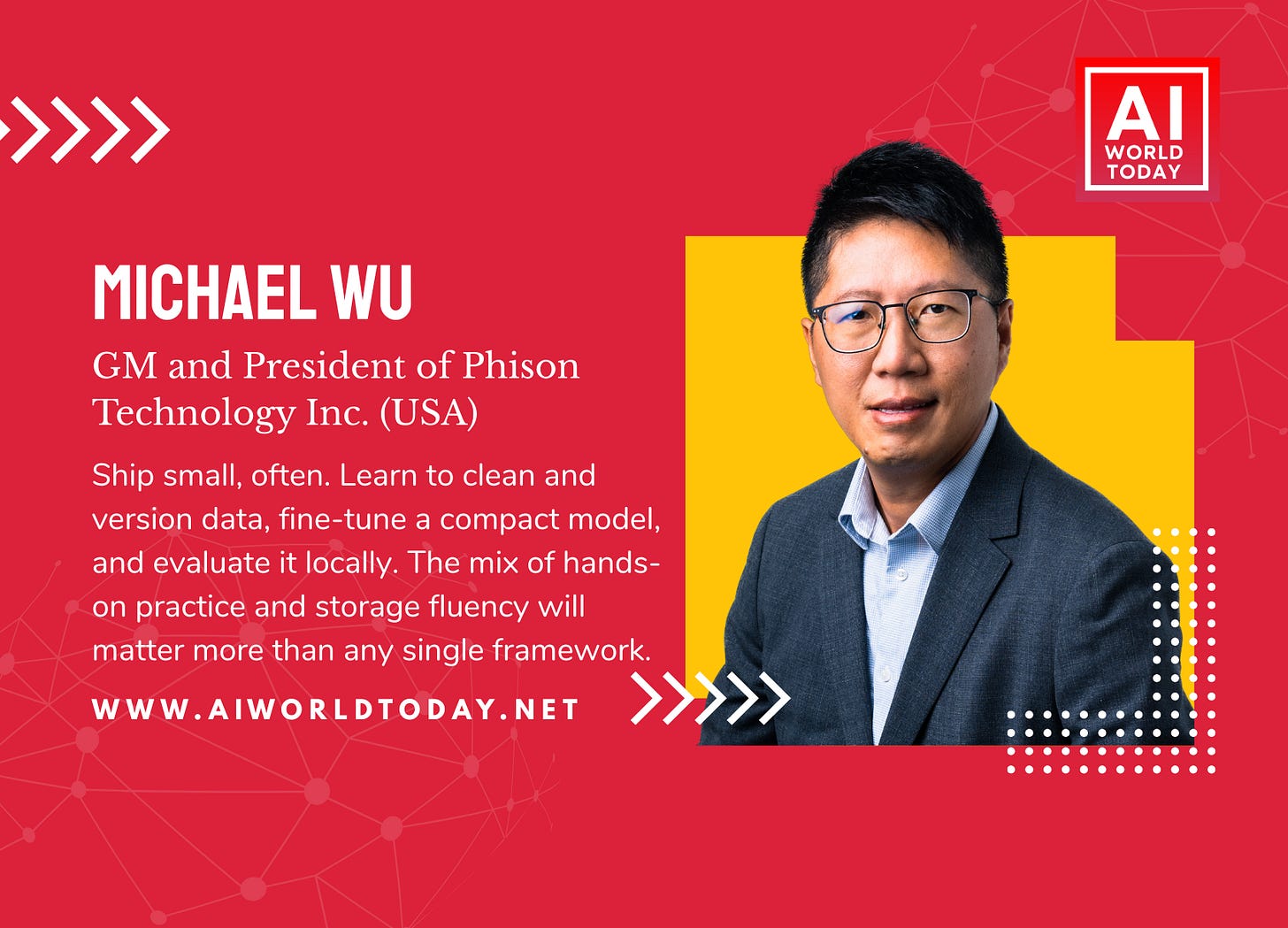Insights from Phison's Michael Wu on How U.S. Students and Professors View AI, Data Storage, And Tech Education
Michael Wu, the GM & President of Phison Technology Inc. (USA), is a distinguished figure in the NAND storage sector with over two decades of industry experience. With a career spanning 17+ years at Phison, Wu has been instrumental in positioning the company as a global leader in NAND storage solutions. His expertise, coupled with his educational background in Electrical Engineering from Virginia Tech, has been pivotal in driving Phison's growth and innovation in the USA market.
In an exclusive interview with AI World Today, Michael Wu delves into the findings of Phison's recent survey on AI, data storage, and tech education in U.S. higher education institutions. The survey, which gathered insights from 42 higher education professionals, reveals a complex landscape of early confidence in data preparation juxtaposed with uneven access to computing resources and skills gaps that are hindering progress in AI education.
1. What motivated Phison to survey U.S. students and professors on AI, data storage, and tech education?
We wanted a clear read on higher education’s AI readiness by delving into what’s working, what’s missing, and where industry can help. Our survey of 42 U.S. higher-ed professionals shows early confidence in data preparation, but uneven access to computing and skills that slow progress. That mix of momentum and roadblocks is exactly where public-private collaboration can move the needle.
2. Which survey finding surprised you most and why?
The preference for approachable tooling stood out. Most respondents favored Windows over Linux or macOS for LLM work and preferred GUI-based workflows over command line signals that usability, not just horsepower, will decide classroom adoption and shape how vendors support faculty and students.
3. The survey shows 70% of students feel unprepared for real-world data storage infrastructure. What’s driving that gap?
Two issues compound the gap: access and enablement. On access, a majority flagged limited high-performance computing as the top barrier to training and deploying models (see Figure 2, p. 3). On enablement, many cited difficulties with LLM concepts, limited programming depth, and lack of time for structured learning – gaps that practical labs and step-by-step resources can close.
4. AI and SSDs are seen as critical to future computing yet receive limited classroom focus. What risks does that pose?
It widens the school-to-work gap. If students don’t touch real storage stacks and model-training workflows, institutions will over-index on theory, face unpredictable cloud costs, and underprepare graduates for regulated, data-governed environments. Our findings point to growing interest in hybrid or on-prem options to control cost and data, areas where SSD-backed infrastructure is essential.
5. How can universities better integrate practical AI and storage applications without overhauling entire curricula?
a. Start modular and hands-on:
Add short lab exercises on data ingestion and model fine-tuning, aligned to what respondents most want to learn.
Use GUI-first, Windows-friendly toolchains that lower barriers for non-CS cohorts.
Blend a small on-prem AI lab for repeatable workloads with controlled cloud bursts for scale.
Offer self-paced, step-by-step exercises with code, matching faculty time constraints.
6. President Trump’s AI Action Plan emphasizes AI literacy and public-private partnerships. How do your results align with those priorities?
Strongly. The plan’s pillars feature innovation and infrastructure, plus education partnerships map to the top barriers we saw: compute access and skills enablement. Our data supports programs that pair infrastructure investments with faculty training and practical content to build AI literacy at scale.
7. What role should companies like Phison play in shaping national AI policy and bridging the education-to-workforce gap?
a. We recommend three roles:
Equip campuses with affordable, SSD-backed labs and provide ongoing technical support
Co-develop micro-curricula and self-paced labs that map to current tools and workflows
Advise on architectures that balance performance, budget, and data control so institutions can move from pilots to production.
b. These steps mirror both our findings and the Action Plan’s emphasis on infrastructure and talent pipelines.
8. How do you see AI and storage technology transforming higher education over the next five years?
Expect campuses will consider hybrid approaches that mix on-premises, SSD-accelerated resources with public cloud or on-premises-only solutions to retain control and predictable costs. This will come down to choosing the right venue per task (cost, control, and scale) rather than defaulting to cloud-only. Tooling will get more visual and guided, putting fine-tuning and evaluation into more classrooms, not just research labs. The institutions that pair infrastructure with enablement will convert curiosity into outcomes.
9. If you could give one piece of advice to a student interested in AI, what would it be?
Ship small, often. Learn to clean and version data, fine-tune a compact model, and evaluate it locally. The mix of hands-on practice and storage fluency will matter more than any single framework.
Michael Wu's insights underscore the critical need for collaboration between industry and academia to bridge the AI education gap. As AI and data storage technologies continue to evolve rapidly, universities face the challenge of keeping pace with real-world applications. Wu's emphasis on practical, hands-on learning experiences and the importance of understanding both AI and storage infrastructure highlights a path forward for educational institutions. By fostering partnerships with companies like Phison and implementing modular, accessible AI curricula, universities can better prepare students for the AI-driven future of technology and business. As the landscape of AI education continues to evolve, the insights provided by industry leaders like Wu will be crucial in shaping effective strategies for nurturing the next generation of tech talent.




